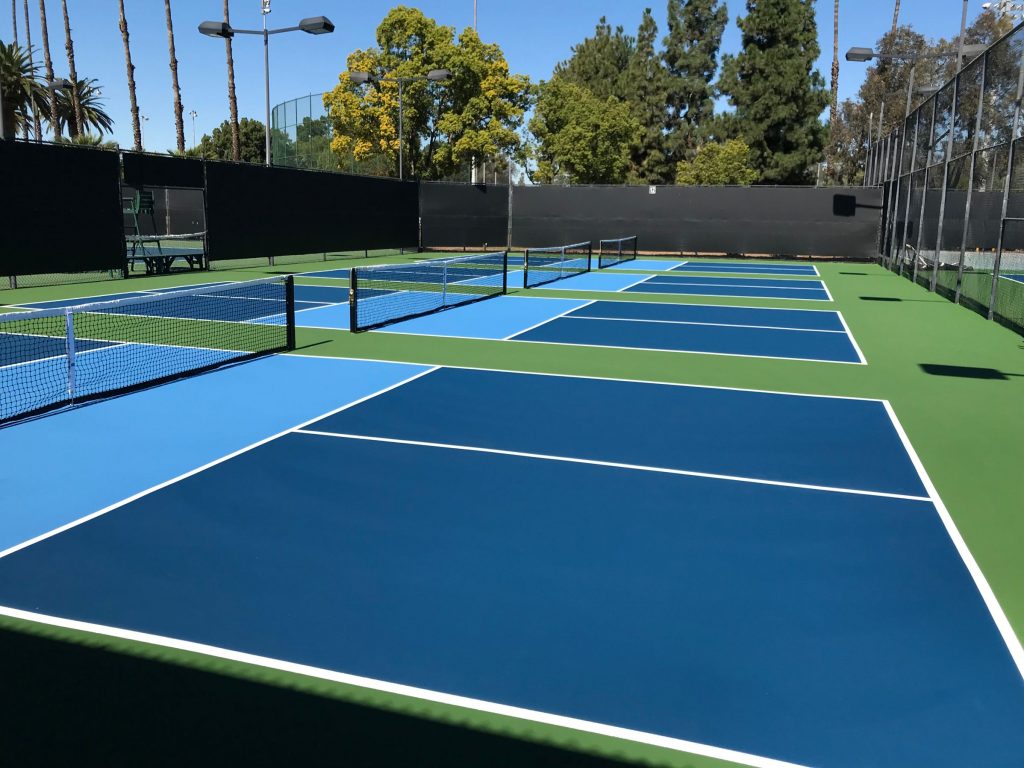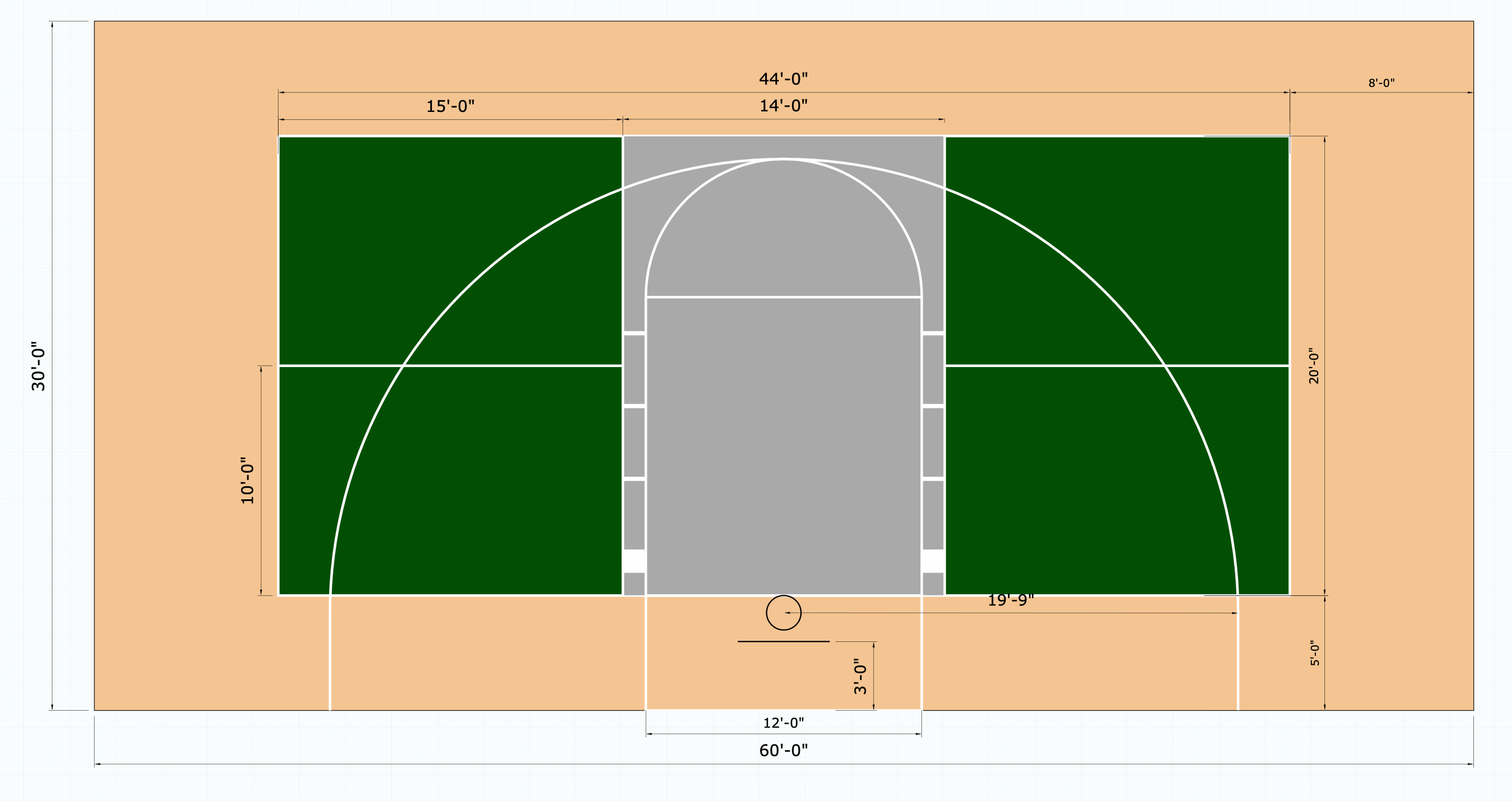Comprehensive Guide to Pickleball Judiciaries Design & Building in Illinois and Midwest
Comprehensive Guide to Pickleball Judiciaries Design & Building in Illinois and Midwest
Blog Article
Trick Elements in the Building And Construction of Pickleball Courts: From Website Choice to Last Surfaces
The building of pickleball courts includes an array of critical factors, beginning with the selection of a suitable site that stabilizes availability with ecological factors to consider. Essential elements such as court dimensions, surface materials, and drainage systems significantly impact not only the quality of play but also the longevity of the facility.
Website Option Standards
When starting the building and construction of pickleball courts, it is important to pin down the website option standards that will certainly make sure ideal playability and ease of access. The place needs to be easily obtainable for players, preferably located near houses or recreation center, to encourage participation.
In addition, the surface must be level and stable, as irregular ground can bring about security risks and affect gameplay. Ample water drainage is likewise vital; selecting a website with great water runoff will certainly assist maintain court problems during adverse climate.
One more important factor to consider is the accessibility of utilities. Accessibility to electrical energy and water is required for lights and maintenance objectives. Furthermore, proximity to parking centers is vital, facilitating simple access for gamers and spectators alike.
Ecological factors can not be ignored; natural color from trees can enhance player convenience, while exposure to dominating winds might disrupt play. Finally, zoning regulations and neighborhood assistance ought to be taken into consideration to guarantee that the task aligns with regional standards and receives the backing it requires for successful application. By very carefully reviewing these criteria, stakeholders can develop a welcoming and functional atmosphere for pickleball lovers.
Court Capacities and Format
To guarantee ideal gameplay and adherence to guidelines, the measurements and format of pickleball courts must be thoroughly specified. A typical pickleball court measures 20 feet in width and 44 feet in length for both singles and doubles play. The suggested design includes a non-volley zone, frequently described as the "kitchen area," expanding 7 feet from the web on either side. This location is critical, as it affects gamer positioning and shot option - Illinois and midwest.
The internet height is set at 36 inches at the sidelines and 34 inches at the facility, developing a mild dip that influences sphere trajectory. Court markings are similarly essential; lines ought to be 2 inches wide and distinct in shade to make sure exposure.
Additionally, a barrier zone surrounding the court is recommended, commonly expanding 5 to 10 feet past the sidelines and baselines to accommodate gamers' motions and improve safety. Proper format and dimensions not only make certain conformity with official regulations yet likewise enhance the total playing experience, accommodating both entertainment and competitive play. Careful preparation in these areas is extremely important to the effective building of pickleball courts.
Surface Area Material Options
Selecting the ideal surface product for pickleball courts is important for guaranteeing optimum player efficiency and security. The selection of surface can significantly impact gameplay, including sphere bounce, traction, and player convenience.
There are a number of options offered, each with its distinct attributes. Asphalt is a popular option due to its toughness and low maintenance needs. It offers a strong playing surface that can hold up against different climate visit the site conditions however might require routine resurfacing.
Concrete is another commonly used material, supplying outstanding durability and a smooth coating. It allows have a peek here for constant round bounce but can be difficult on gamers' joints, making it less desirable for long-lasting play without correct cushioning.
For those looking for boosted comfort and shock absorption, cushioned acrylic surface areas offer a feasible choice. These surfaces incorporate a base layer with an acrylic topcoat, giving boosted traction and a softer feel, which is useful for lowering the threat of injuries.
Lastly, synthetic turf is getting grip, specifically for multi-purpose centers. Its versatility and lower maintenance needs make it an appealing choice, though it might not supply the very same round feedback as traditional hard courts. Careful consideration of these options will ensure an optimal playing environment.
Drainage and Lights Factors To Consider
Appropriate drain and efficient lighting are crucial components in the building and construction of pickleball courts, substantially influencing both playability and safety and security. Appropriate drainage systems prevent water build-up, which can lead to slippery surface areas and damage to the court framework.
Lighting is just as crucial, especially for courts planned for evening use. Correct illumination improves exposure, ensuring that players can see the sphere plainly and reducing the danger of mishaps. her explanation The positioning of lighting fixtures ought to be strategically prepared to remove darkness and provide even distribution of light throughout the court. LED lights are advised for their power efficiency and longevity, using intense lighting while reducing operational costs.

Last Surfaces and Upkeep
After attending to drain and lighting considerations, focus turns to the final coatings and continuous maintenance of pickleball courts. Common alternatives include acrylic coverings and specialized sporting activities surface areas that offer optimal grip and cushioning.

Seasonal upkeep might consist of resurfacing every couple of years, depending on use and ecological elements. Appropriately maintaining internet, court lines, and bordering locations is equally crucial to give a risk-free and satisfying having fun experience. By investing in high quality coatings and sticking to a structured maintenance routine, center proprietors can ensure their pickleball courts remain in exceptional problem for several years to come.
Final Thought
To conclude, the effective construction of pickleball courts hinges on careful focus to numerous key elements. Site choice must focus on access and surface security, while court measurements and layout must follow optimal standards for gameplay. The option of surface material substantially affects player security and performance. Moreover, efficient drain and appropriate illumination add to court durability and exposure. Ultimately, top quality surfaces and a robust maintenance schedule are essential for preserving the court's problem, boosting the general experience for players and spectators alike.
Report this page